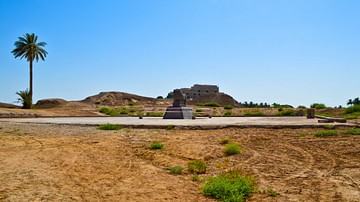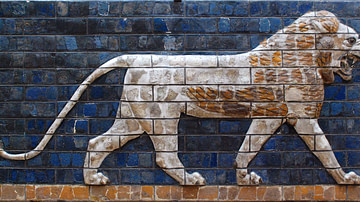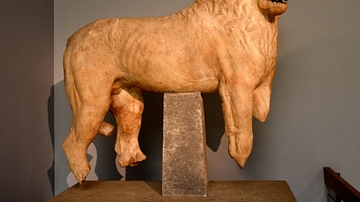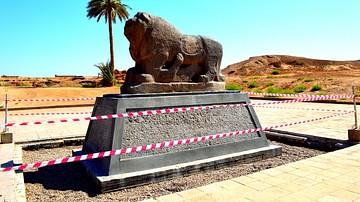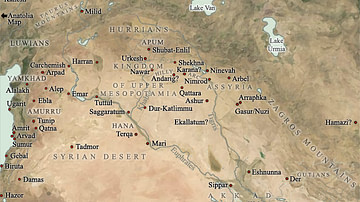Illustration
Ancient glazed tiles from the gates of ancient Babylon (Iraq) depict a lion.
The Lion is the symbol of Babylon, and represents Ishtar, the goddess of fertility, love and war. Meant not only to symbolise Babylon, but to instill fear in enemies, it seems fitting that a single stone lion, albeit poorly preserved, is the only true remainder of Babylon that stands in Iraq today.
Some 120 lions were created in polychrome relief tiles for the processional way towards the northern entrance to Babylon, the Gate of Ishtar, as well as Nebuchadnezzar's Throne Room. Several museum around the world are in posession of these polychrome lions.
Cite This Work
APA Style
oversnap, . (2012, April 26). Lion of Babylon [Detail]. World History Encyclopedia. Retrieved from https://www.worldhistory.org/image/293/lion-of-babylon-detail/
Chicago Style
oversnap, . "Lion of Babylon [Detail]." World History Encyclopedia. Last modified April 26, 2012. https://www.worldhistory.org/image/293/lion-of-babylon-detail/.
MLA Style
oversnap, . "Lion of Babylon [Detail]." World History Encyclopedia. World History Encyclopedia, 26 Apr 2012. Web. 25 Apr 2024.
![Lion of Babylon [Detail]](/img/r/p/750x750/293.jpg?v=1709047443)
